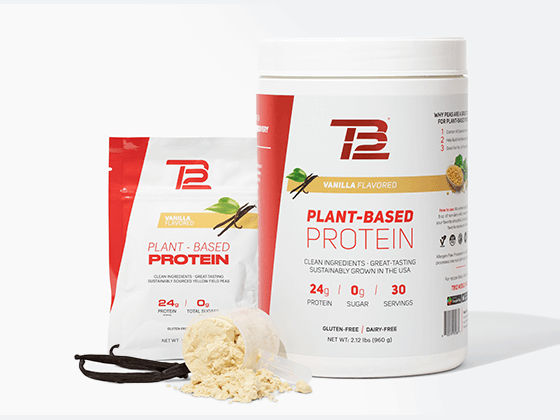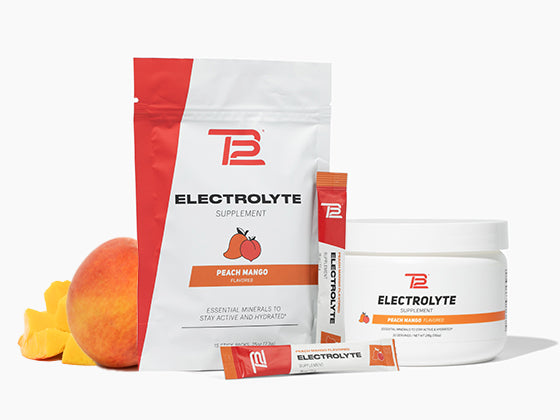Recovery is critical for staying healthy and maximizing performance. At TB12, we believe training and recovery are two halves of a whole, and that you need to put as much effort into recovery as you put into training to fully maximize the impact of both.
Allocating enough time to recovery isn’t always easy – but it is a crucial part of your preparation, and ultimately your performance.
WHAT IS RECOVERY?
Many people associate “recovery” with generally passive activities like sleep and traditional massage. You may have even heard the terms “rest” and “recovery” used interchangeably. It’s important to note that while these are both essential parts of a healthy training regimen, they are very different.
We view recovery as an active process that requires a daily dedication to healthy habits. It doesn’t just start when your workout ends – it’s a 24/7 process. The effort you put into preparing your body before a workout can dramatically improve the way you feel after.
When you’re recovering, you’re providing your body with the nutrients, hydration, blood flow, and time it needs to repair itself and prepare for more exertion. Here’s how you do it:
- Pre- and Post-Workout Pliability
- Active Recovery Training
- Maintaining Adequate Hydration
- Balanced Nutrition
- Rest
Pre- and Post-Workout Pliability:

Prepare your body the right way by making time for at least 5 to 10 minutes of pre-workout pliability before you exercise. Work through the key muscle groups you’ll be using by spending anywhere from 30 to 60 seconds rolling through the muscle on each side of your body. If you aren’t sure which muscles to start with, try the following:
- Calves
- Hamstrings
- Glutes
- Quads
- Lower Back
- Mid-to-upper back
Finish your workout the same way you started it – with 5-10 minutes of pliability. Post-workout pliability helps slow the buildup of lactic acid in your muscles after exercise, and improves blood flow throughout the body. If done for multiple days in a row, pliability training can reduce feelings of fatigue and stiffness after exercise.
Active Recovery Workouts:
Instead of telling our clients to simply rest on the days between high-intensity workouts, we emphasize the importance of active recovery.
By engaging in lower-intensity resistance band and bodyweight exercises, you can accelerate the recovery process by promoting enhanced blood flow throughout your body. Exercises like glute bridges, front planks, lateral band walks, and bodyweight squats are some of our favorite ways to get moving to promote recovery without putting too much strain on the body.
When used together on active recovery days, pliability work using a TB12 vibrating pliability device and our functional strength & conditioning exercises are the perfect way to stay active without slowing down the natural recovery processes that are happening inside your body.
Hydration:
We recommend starting by drinking half of your body weight in fluid ounces of water every day. We refer to this as establishing a “hydration baseline.” Every day, your goal should be to reach your hydration baseline at minimum. So, if you weigh 130 pounds you would drink 65 fluid ounces of water, if you weigh 180 pounds you would drink 90 fluid ounces of water, and so on. This hydration baseline is an excellent place to start, but when you’re active throughout the day and lose a lot of fluids through your breath and sweat, you’ll need to consume even more water in order to maintain adequate hydration.

Without adequate water and electrolyte intake, you can become dehydrated, which makes your heart work harder to supply blood throughout your body. We recommend drinking 4 fluid ounces of electrolyte-enriched water at 15 minute intervals during exercise, and continuing to hydrate regularly throughout the day after exercise.
Balanced Nutrition
We prioritize eating local, nutrient-rich whole foods like organic fruits and vegetables and hormone-free, antibiotic-free lean meats, as this provides the nutrients your body needs to promote proper muscle growth and repair. This commitment to healthy eating is even more important after a workout – you need to supply your body with the protein, natural carbs, and healthy fats it needs to repair itself after strenuous activity. Food is your body’s fuel, so always be mindful of how the things you eat can either help or hurt your recovery. For more of our favorite nutrition tips, check out the TB12 Nutrition Guide.
Rest
There are two key pieces of mindful recovery: meditation and healthy sleep.
Meditation is a habitual process of training your mind to relax and refocus. If you’ve never tried meditation before, you can just start by taking a few minutes to sit quietly, close your eyes, and take deep breaths. Stay focused on your breath, and if your focus wanders or your attention is drawn away, simply return your focus back to your own breathing. Different approaches to meditation work better or worse for different people, so feel free to explore and find something that works best for you. There are many free guided meditation programs available that can help you get started and provide you with more detailed insight into meditation.
Sleep is a time for uninterrupted therapy and natural regeneration. There is no better source of natural recovery than a full night of deep sleep, so make your sleep schedule a priority no matter how busy life gets. Studies have found that the blue light from computer screens, TVs, and smartphones negatively impacts your ability to fall asleep. Turning off all your electronic devices at least a half-hour before bedtime will quiet your mind. Instead of surfing the web, focus on something relaxing and serene. Turn off or down the lights in your room and create a relaxing environment before bed.
Both meditation and de-stimulation before bed promote proper hormone balance in the body, especially by limiting the release of the stress hormone cortisol. Elevated cortisol levels can cause inflammation and mental confusion, and contribute to a higher risk of anxiety and depression.
INVEST IN YOUR RECOVERY
TB12 Co-Founder Tom Brady once said, “Your ability to work hard is only as good as your ability to recover.” He’s right – it doesn’t matter how much time and effort you put into your training if you aren’t dedicating time to recovery too. Make recovery a priority every day. Even if it’s starting with something as simple as just drinking more water or adding 10 minutes of pliability rolling into your routine before and after a workout, you will notice a difference in the way your body feels





